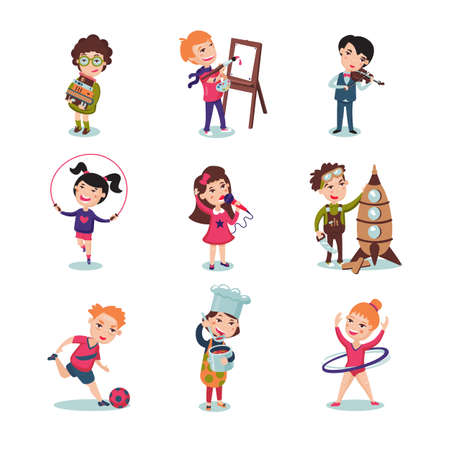1. Understanding Psychosocial Challenges for Children with Cerebral Palsy
Cerebral palsy (CP) is a lifelong condition that affects movement and muscle coordination, but its impact goes far beyond physical challenges. In the United States, children with cerebral palsy often face unique psychosocial issues that can influence their emotional well-being, social life, and psychological development. Understanding these challenges is an important step for families, educators, and healthcare professionals as they support children living with CP.
Emotional Challenges
Children with cerebral palsy may experience a range of emotions as they navigate daily life. Feelings of frustration, sadness, or anxiety are common, especially when they encounter obstacles that their peers do not face. These emotions can be triggered by difficulties in performing certain tasks independently or feeling different from others at school or in the community.
Common Emotional Issues
| Challenge | How It May Show Up |
|---|---|
| Low Self-Esteem | Feeling less confident about abilities; avoiding new activities |
| Anxiety | Nervousness in social situations; worry about being accepted |
| Frustration/Anger | Irritability when tasks are difficult; anger at limitations |
| Sadness/Isolation | Withdrawing from friends; feeling left out |
Social Challenges and Peer Relationships
In American schools and neighborhoods, fitting in with peers is important for most children. Kids with CP might struggle to join group activities like sports or playground games due to mobility differences or communication barriers. This can sometimes lead to social isolation or bullying, which further impacts their ability to build friendships and feel accepted.
Ways Peer Relationships May Be Affected
- Difficulties participating in physical games or sports with classmates
- Trouble communicating needs or feelings if speech is affected
- Risk of being left out of birthday parties, playdates, or group projects
- Possibility of being targeted by teasing or bullying because of visible differences or assistive devices (like wheelchairs)
Coping Strategies Within the American Context
Developing positive coping skills can make a big difference for children with CP and their families. Some strategies that work well within American society include:
- Inclusive Activities: Finding adaptive sports teams, art programs, or clubs designed for all abilities helps kids feel included.
- Counseling Services: Accessing school counselors or mental health professionals who understand disability issues can provide vital support.
- Peer Support Groups: Joining groups where kids meet others facing similar challenges helps build friendships and confidence.
- Family Advocacy: Parents working with schools to ensure Individualized Education Plans (IEPs) address both learning and social needs.
- Community Resources: Connecting with local non-profits and national organizations (like United Cerebral Palsy) for guidance and social events.
Helpful Resources for Families in the U.S.
| Resource Type | Description/Example |
|---|---|
| School Support Teams | Counselors, psychologists, special education teachers available at most public schools to help students with disabilities thrive socially and emotionally. |
| Adaptive Recreation Programs | Parks & Rec departments offer accessible sports/leisure activities—check your city’s website for options like wheelchair basketball or adaptive swimming. |
| Parent Networks & Nonprofits | Organizations such as United Cerebral Palsy offer family support groups, workshops, and online forums to connect with other parents across the country. |
| Mental Health Hotlines/Resources | The National Alliance on Mental Illness (NAMI) provides free resources and helplines to support emotional wellness. |
2. Addressing Family Dynamics and Caregiver Stress
The Impact of Cerebral Palsy on American Families
When a child in the United States is diagnosed with cerebral palsy (CP), the news affects the entire family. Parents, siblings, and extended family members all experience emotional and practical changes. Navigating healthcare systems, therapy appointments, and school accommodations can be overwhelming. Many families find themselves adjusting daily routines to support their childs needs while trying to maintain a sense of normalcy.
Understanding Caregiver Burden
Parents or primary caregivers often take on significant responsibilities when caring for a child with CP. This can lead to physical exhaustion and emotional stress. In the U.S., many caregivers juggle jobs, medical care, insurance paperwork, and advocacy work at schools. The pressure can sometimes result in caregiver burnout, which affects both the caregivers health and the overall well-being of the family.
Common Sources of Caregiver Stress
| Source of Stress | Description |
|---|---|
| Time Management | Balancing work, therapies, and family life can feel overwhelming. |
| Financial Pressure | The cost of medical care and adaptive equipment adds up quickly. |
| Lack of Personal Time | Caregivers may have little time for self-care or social activities. |
| Emotional Strain | Feelings of guilt, worry, or sadness are common. |
Siblings: Relationships and Challenges
Siblings of children with CP may also feel the impact. They might notice that their parents attention is focused more on their brother or sister’s needs. Some siblings feel left out or responsible for helping at home. Open communication helps prevent misunderstandings and fosters healthy relationships among siblings.
Ways to Support Siblings
- Encourage open conversations about feelings and concerns.
- Create opportunities for one-on-one time with each child.
- Involve siblings in age-appropriate caregiving roles without making them feel overwhelmed.
- Connect with sibling support groups or programs offered by local organizations or hospitals.
Building Resilience and Family Support Strategies
Coping with the challenges of cerebral palsy requires building resilience within the family. Here are some practical strategies commonly used by American families:
- Seek Professional Help: Family counseling or support groups provide a safe space to talk about stressors and learn coping skills.
- Create Routines: Consistent daily schedules help everyone know what to expect, reducing anxiety for both parents and children.
- Practice Self-Care: Caregivers should prioritize their own health by taking breaks, asking for help, or accessing respite services when possible.
- Leverage Community Resources: Many communities offer support groups, recreational programs for children with disabilities, and financial assistance options.
- Celebrate Small Wins: Focusing on achievements—big or small—can boost morale and strengthen family bonds.
By recognizing the unique stressors faced by families raising a child with cerebral palsy in the U.S., it becomes easier to find meaningful ways to offer psychosocial support. Addressing family dynamics openly helps everyone adapt more successfully and thrive together as a unit.

3. Culturally Sensitive Counseling Approaches
Understanding the Importance of Culture in Counseling
When supporting children with cerebral palsy (CP) and their families, it’s essential to recognize that every family brings its own cultural background, beliefs, and values. American families come from diverse ethnicities, religions, and traditions, which can affect how they view disability, seek help, and interact with healthcare providers. Culturally sensitive counseling means respecting these differences and adapting support to fit each familys unique needs.
Effective Counseling Models for Diverse Families
Counselors working with children with CP and their families often use models that are flexible and inclusive. Below is a table outlining some effective counseling models and interventions tailored for diverse American families:
| Model/Intervention | Description | How It Supports Diverse Families |
|---|---|---|
| Family-Centered Care | Involves the entire family in therapy planning and decision-making. | Respects family roles, encourages open communication, and includes extended family if important in the culture. |
| Cultural Competence Training | Counselors receive education about different cultures and how to avoid bias. | Ensures counselors are aware of cultural sensitivities and adapt their approach accordingly. |
| Bilingual/Bicultural Counseling | Counseling services provided in the familys preferred language or by someone familiar with their culture. | Helps families communicate more comfortably and feel understood. |
| Strength-Based Approach | Focuses on the familys strengths, resources, and coping strategies. | Empowers families by acknowledging what they do well within their own cultural context. |
| Community Resource Integration | Connects families with local support groups, faith communities, or cultural organizations. | Makes support more relevant by involving trusted community resources. |
Practical Strategies for Counselors
- Ask Open-Ended Questions: Encourage families to share their beliefs and preferences regarding care for their child with CP.
- Avoid Assumptions: Don’t assume all families from the same background have the same views; always ask what matters most to them.
- Use Interpreters When Needed: For families who speak languages other than English, offer professional interpreters to avoid miscommunication.
- Create Safe Spaces: Make counseling environments welcoming by including culturally familiar symbols or materials when possible.
- Respect Religious and Spiritual Beliefs: Be open to incorporating faith-based practices into counseling if requested by the family.
The Role of Community Resources in Support
Diverse American communities offer many resources that can strengthen psychosocial support. For example, churches, mosques, synagogues, cultural centers, neighborhood groups, and online forums can provide emotional support, practical advice, or even financial assistance. Counselors should help families connect with these resources whenever possible.
4. Building Support Systems in Schools and Communities
Collaborating with School Personnel
For children with cerebral palsy (CP), school is more than just a place for learning. It’s a vital social hub where they can make friends, build confidence, and feel included. To create a supportive environment, it’s important for parents and caregivers to work closely with teachers, counselors, special education staff, and school administrators. Here are some practical ways to collaborate:
| School Personnel | How to Collaborate | Potential Benefits |
|---|---|---|
| Teachers | Share information about your child’s strengths and needs; discuss helpful classroom strategies; request regular check-ins. | Promotes understanding and adaptation for your child’s success. |
| Counselors | Request support for emotional or social challenges; explore opportunities for peer mentoring or group activities. | Provides psychosocial support for both student and family. |
| Special Education Staff | Participate in Individualized Education Program (IEP) meetings; set clear goals together; ask about available resources. | Ensures personalized learning plans and access to needed services. |
| Administrators | Discuss accessibility needs; advocate for inclusive events and policies. | Makes the entire school community more welcoming and accessible. |
Connecting with Community Organizations
Many U.S. communities have organizations dedicated to supporting children with disabilities and their families. These groups offer resources like recreational programs, family counseling, advocacy training, and even financial assistance. Getting involved can help families feel less isolated and more empowered.
- Pediatric therapy centers: Offer group therapy sessions or adapted sports teams for kids with CP.
- Parent support groups: Provide a safe space to share experiences, exchange advice, and find emotional support from others who understand.
- Non-profits like United Cerebral Palsy (UCP): Connect families to local events, workshops, and services designed specifically for children with CP.
- Boys & Girls Clubs or YMCA: Sometimes offer inclusive after-school or summer programs that welcome all abilities.
Fostering Peer Networks
Building peer connections helps children with cerebral palsy develop friendships and social skills while reducing feelings of isolation. Families can encourage participation in:
- Inclusive sports leagues or clubs: Many cities have adaptive sports programs or arts classes where all kids can participate together.
- Siblings’ groups: Special groups for brothers and sisters of children with CP provide them with support as well.
- Mental health workshops: Some schools and organizations host workshops focused on resilience, self-advocacy, and coping skills for both kids and parents.
The Value of Teamwork
No one should have to navigate the journey alone. By working together—families, schools, community organizations, and peers—we can build a strong network that empowers children with cerebral palsy to thrive socially, emotionally, and academically in every part of their lives.
5. Resources and Advocacy for Ongoing Support
Accessing American-Based Resources
Families of children with cerebral palsy (CP) often need extra support. In the United States, there are many organizations and programs that offer help. Knowing where to look can make a big difference in getting the right services for your child. Below is a table with some trusted resources that provide information, therapy, financial assistance, and more:
| Resource Name | What They Offer | Website |
|---|---|---|
| United Cerebral Palsy (UCP) | Support groups, advocacy, family services | ucp.org |
| Cerebral Palsy Foundation (CPF) | Education, community programs, research updates | yourcpf.org |
| The Arc | Advocacy for people with disabilities, local chapters for support | thearc.org |
| Easterseals | Therapy, respite care, inclusive camps and activities | easterseals.com |
| Parent to Parent USA (P2P USA) | Peer support from other parents of children with special needs | p2pusa.org |
Connecting with Support Groups and Communities
Finding others who understand your experiences can be comforting. Many families join local or online support groups where they can share advice, learn about new therapies, and find emotional support. Here are some ways to connect:
- Local Hospital Programs: Many children’s hospitals have social workers who can link you to parent groups.
- Social Media Groups: Facebook and Reddit have active CP communities where parents swap tips and encouragement.
- Community Centers: Check if your town or city offers special needs family meet-ups or events.
- Schools: Some school districts have parent-teacher organizations focused on special education needs.
Advocating for Inclusive Policies and Services
Your voice matters when it comes to making sure your child has access to the best possible services. In the U.S., families can advocate at both local and national levels for better inclusion in schools, accessible playgrounds, healthcare access, and more. Here are steps you can take:
- Stay Informed: Learn about laws like the Americans with Disabilities Act (ADA) and Individuals with Disabilities Education Act (IDEA).
- Join Advocacy Organizations: Groups like The Arc and United Cerebral Palsy work to improve policies for people with disabilities. Joining gives you tools and opportunities to make your voice heard.
- Participate in IEP Meetings: If your child is in school, attend Individualized Education Program (IEP) meetings to ensure their needs are met.
- Email or Call Elected Officials: Share your story to encourage lawmakers to support inclusive initiatives.
- Attend Community Forums: Local government meetings often discuss accessibility projects—your input is valuable!
Together We Make a Difference
No one has to go through this alone. By reaching out to resources, connecting with others, and speaking up for what matters, families can help build a more supportive world for children with cerebral palsy across America.


